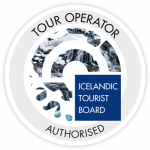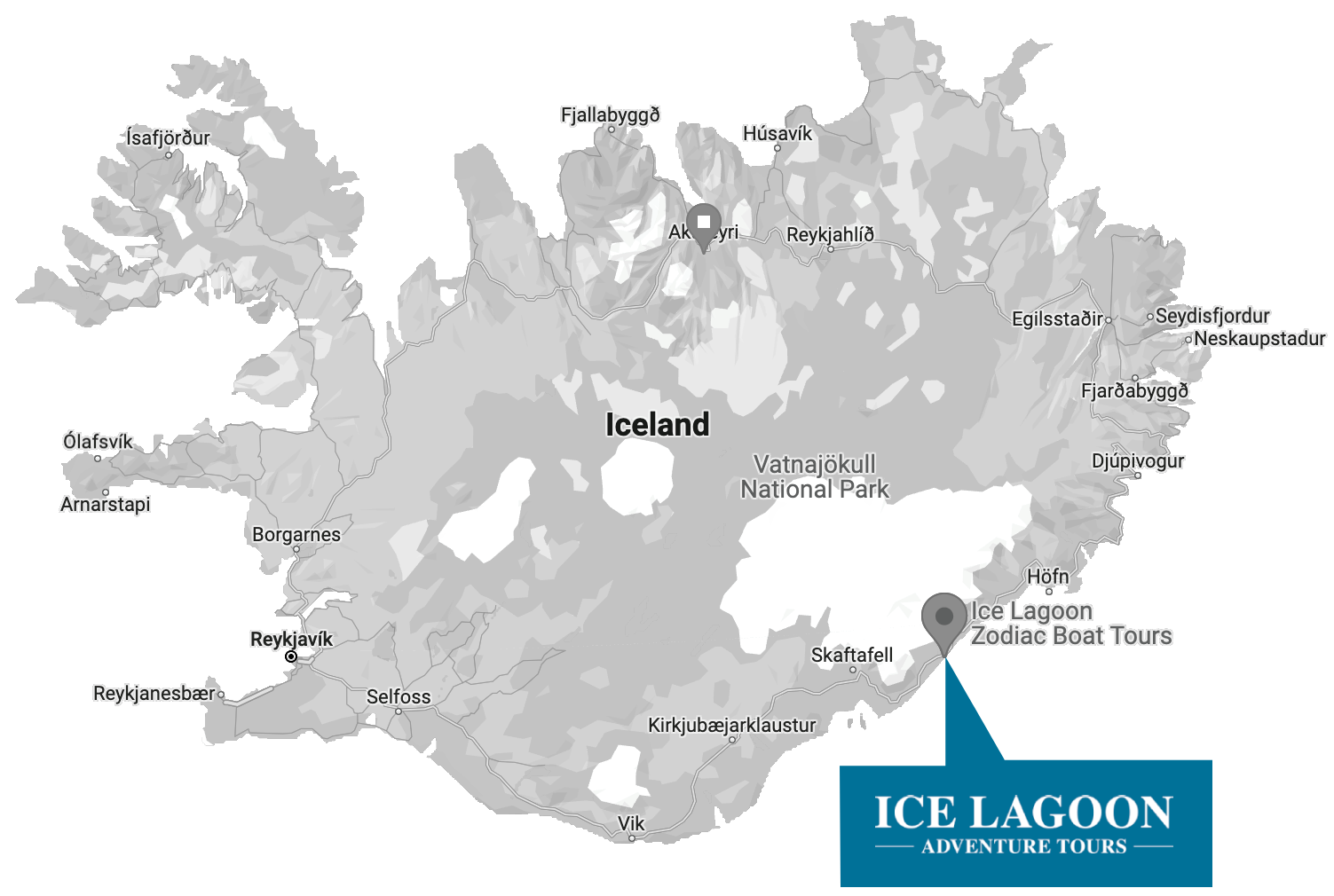Jökulsárlón Glacier Lagoon
Jökulsárlón Glacier Lagoon is one of the most amazing natural wonders of Iceland and one of the most popular attractions for travelers to visit. Of course, it’s a “must” to get on a Jokulsarlon glacier lagoon boat tour! The lagoon is a part of Vatnajökull national park and the largest glacier by mass in all of Europe.
Europe’s largest glacier Vatnajökull looms over the lagoon, which is without a doubt one of Iceland’s most awe-inspiring sights. Jökulsárlón is a few-hour drive from Reykjavík but is definitely not a sight to be missed.
The lagoon is a part of Vatnajökull National Park, Iceland’s biggest National Park and a UNESCO World Heritage site.
How was Jökulsárlón formed?
The lagoon itself is relatively new. Jökulsárlón began forming when Breiðamerkurjökull Glacier started retreating about 90 years ago. Before 1934 the outlet glacier reached the highway but then began to retreat. By 1956 the size of the lagoon was 4.5 km² and in 1975 the lagoon had reached the size of 8 km². Today, the lagoon is now only about 250 metres away from the Atlantic Ocean’s edge and around 30km² in size, while still growing. Jökulsárlón is also the deepest lake in Iceland with a maximum depth of around 260 meters.
In the past 50 years, the lagoon has increased fourfold in size. Only a couple of centuries ago, the glacier reached almost as far as the lagoon reaches now.
The landscape has changed a lot in recent years and Jökulsá Glacial River, which runs from the lagoon and out to sea, used to go straight from the glacier. The Breiðamerkursandur desert, where the famous Diamond Beach is situated, also used to be much larger.
Where have I seen it before?
Jökulsárlón has been used in a few films in the past few decades. If you are a Bond fan, you might remember it from A View To a Kill and Die Another Day (which included a fantastic car chase on the ice). Batman Begins and Lara Croft: Tomb Raider also used Jökulsárlón as a setting.
Rich with life
A Jökulsárlón glacier lagoon tour is the perfect place to experience wildlife, unspoiled nature and a unique environment where huge icebergs have calved off and float around the lagoon in all shapes and colors.
The lagoon is full of life, mostly fish but many seals live there as well, and if you are lucky, you can see seals sunbathing on the icebergs in the lagoon. During the summer months, migratory bird-species nest near the lake, including the Arctic tern. Beware of them though, they are fiercely protective of their hatchlings, and if you get too close, they will try and peck you on the head.
The birds and seals live off fish that drift into the lagoon from the ocean with the tides. They catch herring, salmon, krill, trout and other fish species.
Another bird species, which you might have to have a lookout for in the summer months, is the Arctic skua. The birds are aggressive and eat both fish and other birds, such as puffins. Just like the Arctic terns, they do not tolerate humans near their nests, and they are not afraid of us!
What is Diamond Beach?
While visiting Jökulsárlón please be sure to check out the Diamond beach on the ocean side of the lagoon. Icebergs float out the river into the ocean that delivers them to the black beach. The name of the beach on the east side of the river is Eystri-Fellsfjara and on the west side of the river, the beach is called Vestri Fellsfjara. But for some time the beach is known by many as the Diamond Beach, where icebergs shine like diamonds on the black sanded beach.
How to get to Jökulsárlón?
Jökulsárlón is located in the south-east part of Iceland, in the realm of Vatnajökull national park. It’s about 380 kilometers east of Reykjavik and about 80 kilometers west of the town Höfn. The lagoon lies along the major ring road so it’s easily accessed. You´ll not need to travel away from the ring road to get on a Jokulsarlon glacier lagoon boat tour.





